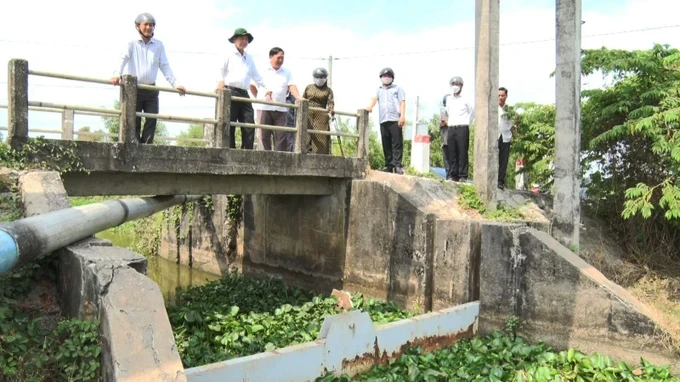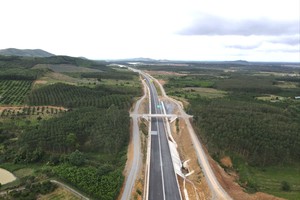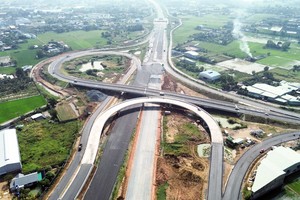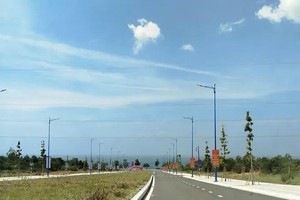
According to a prediction of Deputy Director To Van Thanh of the Southern Institute of Water Resources, the Mekong Delta will experience deeper salinity intrusion in January 2025 due to rapidly decreasing Mekong River flow.
He projected that salinity would intensify and reach its apex between February and April 2025. The most critical period, characterized by a progressive rise in salinity, is anticipated to be from the commencement of the dry season on February 28 through March 4, 2025.
Accordingly, the highest 4‰ salinity boundary is 40-45km from the sea on branches of the Tien River, 52-56km on branches of the Ham Luong River, 50-60km on branches of the Co Chien River and 50-55km on branches of the Hau River.
Deputy Director of the Southern Institute of Water Resources To Van Thanh recommended that from late February to April 2025, saltwater intrusion will extend deep into river mouths. Coastal localities should proactively implement drought and salinity prevention measures tailored to regional conditions. In the upper Mekong Delta, challenges are most severe in the high mountainous areas of Tinh Bien and Tri Ton of An Giang Province necessitating water storage and conservation efforts.
In the middle Mekong Delta, salinity control and water storage systems should be properly managed. When drawing fresh water or irrigating crops, it is crucial to closely monitor salinity levels, particularly for orchards growing fruit trees.
In coastal areas of the Mekong Delta, unpredictable saltwater intrusion may impact water resources and agricultural production in irrigation systems such as Go Cong, Bac Ben Tre, Tra Vinh's coastal areas, and the Long Phu - Tiep Nhat system. Therefore, response plans should be in place, and water should be stored and used efficiently. Special attention must be given to ensuring sufficient water supply for fruit-growing areas in Chau Thanh, Cho Lach, and Mo Cay Bac - Nam districts of Ben Tre Province as well as Ke Sach District of Soc Trang Province.
























